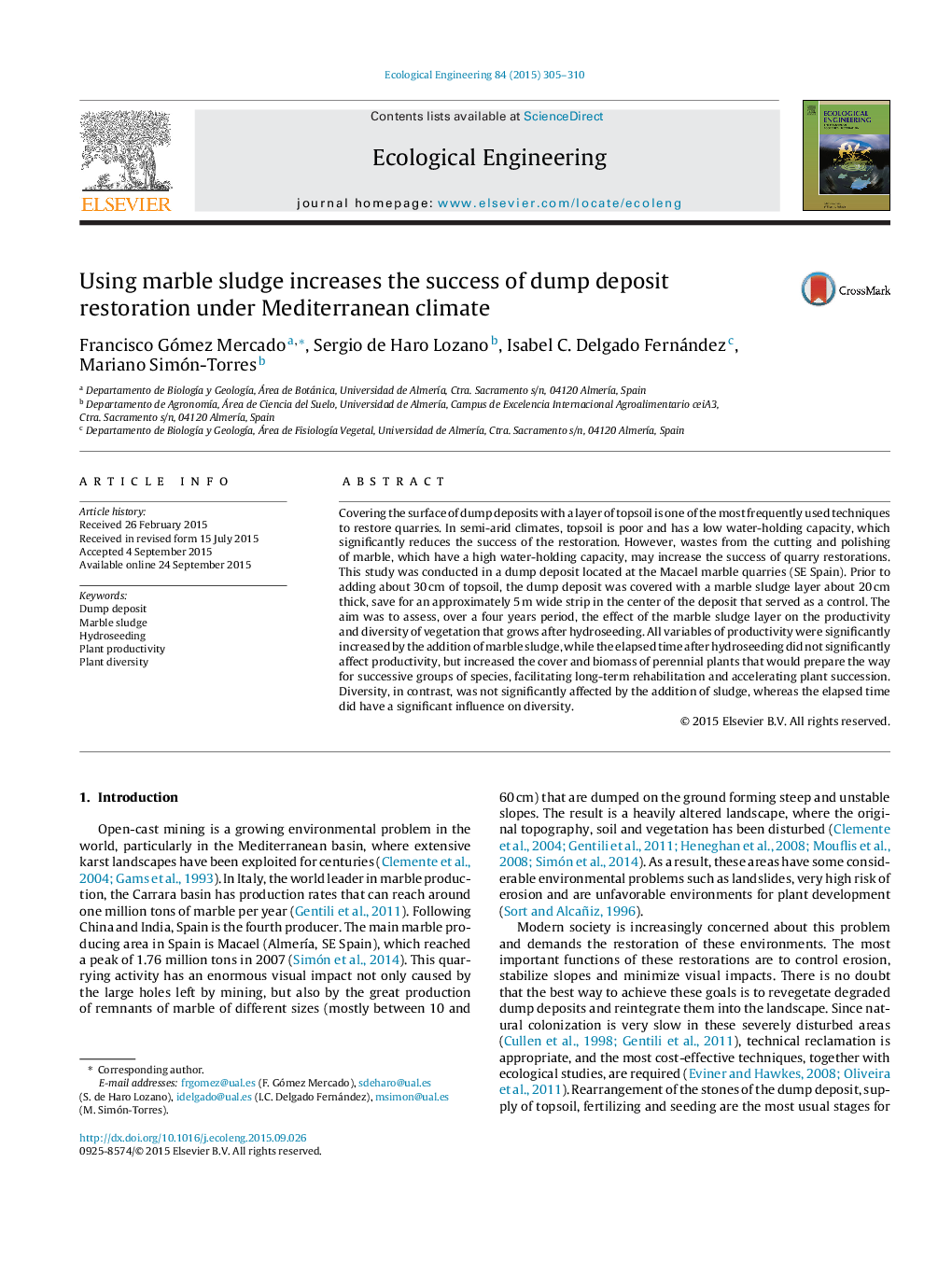| کد مقاله | کد نشریه | سال انتشار | مقاله انگلیسی | نسخه تمام متن |
|---|---|---|---|---|
| 4388797 | 1618015 | 2015 | 6 صفحه PDF | دانلود رایگان |
• Marble sludge addition significantly improves plant production in restored dump deposits.
• Plant productivity was high from start and was not affected by the time elapsed.
• Perennial development was encouraged by marble sludge which accelerated plant succession.
• Marble sludge addition does not affect diversity in the short term.
Covering the surface of dump deposits with a layer of topsoil is one of the most frequently used techniques to restore quarries. In semi-arid climates, topsoil is poor and has a low water-holding capacity, which significantly reduces the success of the restoration. However, wastes from the cutting and polishing of marble, which have a high water-holding capacity, may increase the success of quarry restorations. This study was conducted in a dump deposit located at the Macael marble quarries (SE Spain). Prior to adding about 30 cm of topsoil, the dump deposit was covered with a marble sludge layer about 20 cm thick, save for an approximately 5 m wide strip in the center of the deposit that served as a control. The aim was to assess, over a four years period, the effect of the marble sludge layer on the productivity and diversity of vegetation that grows after hydroseeding. All variables of productivity were significantly increased by the addition of marble sludge, while the elapsed time after hydroseeding did not significantly affect productivity, but increased the cover and biomass of perennial plants that would prepare the way for successive groups of species, facilitating long-term rehabilitation and accelerating plant succession. Diversity, in contrast, was not significantly affected by the addition of sludge, whereas the elapsed time did have a significant influence on diversity.
Journal: Ecological Engineering - Volume 84, November 2015, Pages 305–310
